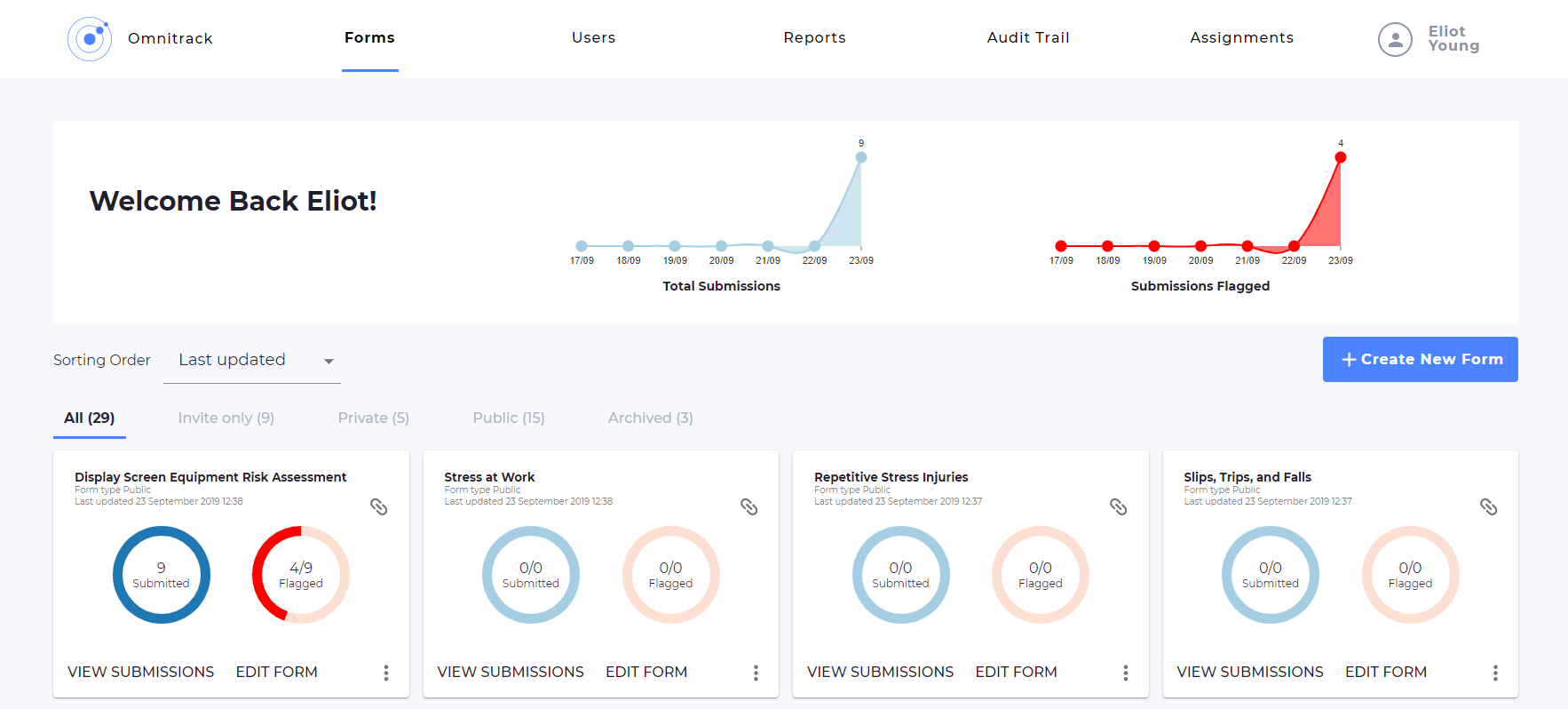Failure to comply with health and safety laws can result in both civil and criminal penalties. As an employer, if someone has an accident at work or is made ill, a health and safety regulator can prosecute that employer for a criminal offence, and / or the person who was injured or made ill can make a civil claim for damages. No one has to be harmed for a health and safety offence to occur. The risk of harm is enough for an offence.
Health and Safety Laws in the UK
The Health and Safety at Work Act 1974 requires all businesses in the UK to provide whatever information, instruction, training and supervision as is necessary to ensure the health and safety of employees. Further, as part of managing the health and safety of staff, employers are required by law to perform a risk assessment of the hazards relevant to their workplace.
In addition, all UK employers have a duty to report certain serious workplace accidents, occupational diseases and specified dangerous occurrences (near misses) under the Reporting of Injuries, Diseases and Dangerous Occurrences Regulations 2013 (RIDDOR).
These laws apply to all workplaces, from high-risk environments such as construction sites, where additional legislations applies, to lower risk places such as offices. There are also regulations surrounding DSE, or display screen equipment.
UK Health and Safety at Work Legislation
The Health and Safety at Work etc. Act 1974
This law sets out the framework for managing workplace health and safety in the UK.
The act defines the general duties of everyone from employers (section 2) and employees (section 7,8) to owners, managers and maintainers of work premises (etc) for maintaining health and safety within most workplaces.
For business sectors that operate within a higher risk environment, such as construction, chemical manufacturing or nuclear, there is further legislation.
As a brief overview, the HASAWA 1974 requires that workplaces provide:
- Adequate training of staff to ensure health and safety procedures are understood and adhered to
- Adequate welfare provisions for staff at work
- A safe working environment that is properly maintained and where operations within it are conducted safely
- Suitable provision of relevant information, instruction and supervision
For workplaces with five or more employees, employers must keep a written record of their health and safety policy, as well as consult with employees on relevant policies and associated health and safety arrangements.
Workplace (Health, Safety and Welfare) Regulations 1992
These regulations apply to all aspects of the working environment and require employers to provide a workplace that is safe and suitable for all work activities.
This includes providing break areas, washing facilities and drinking water, as well as appropriate lighting, ventilation and space to work. Safety provisions must also be taken including properly maintaining equipment, floor spaces, and protection from possible injuries.
Display Screen Equipment (DSE) Regulations 1992 (amended 2002) – DSE
The DSE Regulations define relevant workers as those who use DSE daily for an hour or more at a time. This includes those working with computers, laptops and smartphones. Employers must take steps to protect these workers from the health risks of working with display screen equipment.
Employers must:
- Carry out a suitable DSE workstation assessment
- Reduce associated risks, including making sure workers take regular breaks from DSE work and provide ancillary equipment if required
- Provide a free eye and eyesight test upon request from a DSE user
- Provide relevant training and information for DSE users
The Management of Health and Safety Regulations 1999
This law explicitly states what employers are required to do to manage health and safety under the Health and Safety at Work Act. The main requirement on employers is to carry out a risk assessment. If you have five or more employees, you need to record the significant findings of the risk assessment.
For office environments, risk assessments don’t have to be complicated.
Employers must also:
- Report any shortcomings in health and safety arrangements
- Report dangerous situations
- Use equipment in accordance with training and instruction
- Take reasonable care of their own health and safety and those of others who may be affected by their acts or omissions
The Reporting of Injuries, Diseases and Dangerous Occurrences Regulations 2013 – RIDDOR
Certain cases of workplace injuries, illnesses or incidents must be reported under RIDDOR. Employees should report accidents or incidents to their manager. Employers, managers and supervisors have a legal obligation to correctly follow reporting procedures.
Reportable incidents include:
- Fatal and non-fatal injuries
- Occupational diseases
- Dangerous occurrences (often referred to as ‘near misses’)
- Incidents that result in more than seven days’ absence from work
- Incidents involving gases
VinciWorks’ health and safety training and reporting solution

VinciWorks’ health and safety compliance solution includes interactive, customisable training and a central reporting portal for assessing workplace health and safety risk. Our course, Health and Safety for Office Workers, delivers short, relevant and interactive health and safety training units that can be customised to the specific office of each user. Further, our health & safety risk assessments cover the five key risk areas of the modern office and enable companies to identify health and safety risks throughout the organisation by engaging every employee in the risk assessment process. The assessments provide employers with instant feedback highlighting potential workplace risks; the results can be aggregated into charts in seconds and red flags can easily be tagged and monitored.








